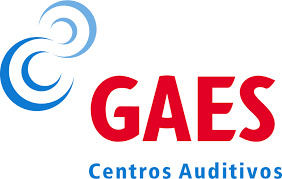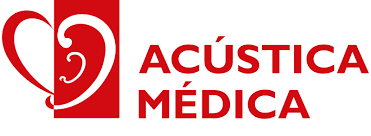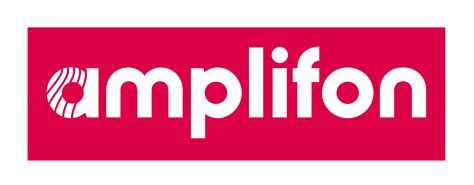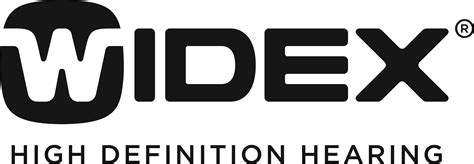Summary
The global hearing aid market, valued at around $8.38 billion, has shown a projected growth trend with a CAGR of 7.2%, aiming to reach $14.45 billion by the end of 2026. This growth is driven by an aging population and an estimated increase in hearing impairment, which is expected to affect around 900 million people worldwide by 2050 due to factors such as noise pollution, genetic predisposition and infection. 16 million hearing aids have been sold worldwide, indicating a strong demand that is likely to persist as awareness of the consequences of hearing loss increases. Meanwhile, the cost attributable to untreated hearing loss in Europe was a substantial 216 billion euros a year. The Portuguese market echoes these trends, with a market value of around 80 million euros and an estimated 40,000 hearing aids sold that year.
Supply dynamics in Portugal show a highly concentrated market structure due to recent acquisitions, in particular by Amplifon. However, the COVID-19 pandemic posed significant challenges to the industry, affecting supply chains and reducing immediate demand for hearing aids due to closures and the prioritization of critical care.
Emerging trends in the hearing aid market
In recent years, the hearing aid market in Portugal has experienced significant growth - a significant increase on previous years. This growth has been fuelled by a combination of factors, including an ageing population, growing awareness of hearing health and technological advances. The number of hearing impairments reported by the Portuguese population highlights a striking contrast between those who need aids and the low penetration rate of actual use. Only a small percentage, between 2-3% of the population, claim to use hearing aids, while over 20% report having a hearing problem. This indicates a clear potential for market expansion.
Several key demographics influence demand trends in the hearing aid market. Notably, older people - between 65 and 74 - make up the largest segment of those reporting hearing problems. With demographic trends in Portugal pointing to an increase in the "over 60s" group, and around half the population over the age of 45, the hearing aid market is set to grow. Geographically, regions such as Alentejo and the island areas of Madeira and the Azores report higher percentages of self-reported hearing difficulties, framing a clear regional demand pattern. Internationally, Portugal has positioned itself as a major net importer of hearing aids, with Poland and Spain being the main suppliers. Sales volumes of hearing aids also rose overall, with the world selling between 15 and 20 million units, an increase of around 6.5% on the previous year. Price sensitivity remains a predominant factor affecting hearing aid adoption. Consumers often prioritize cost over quality, which influences their purchasing decisions.
Indeed, untreated hearing loss entails considerable societal costs, estimated at around 8,200 euros per person per year in Europe due to associated sequelae such as unemployment, lack of productivity and depression. In the Portuguese market, adults with a low level of education run a higher risk of hearing loss, and targeted awareness and prevention measures can significantly influence demand. There is also a link between exposure to noise or harmful drugs and hearing problems, which could extend the reach of the market as awareness grows. With the COVID-19 pandemic impacting healthcare services and consumer behavior, market dynamics faced short-term challenges, with supply shocks and a postponement of hearing aid consultations. However, tele-audiology services have emerged as key market players that are shaping the hearing aid landscape in Portugal
The Portuguese hearing aid market is a dynamic landscape dominated by a handful of leading players who have strengthened their presence through strategic acquisitions and extensive retail networks. These leading companies account for a significant share of the market, offering a diverse range of hearing aid solutions designed to meet the different needs of people with hearing impairments. Below, we look at the profiles of the main entities that have a substantial influence on the retailing of hearing aids and accessories in Portugal.
- Amplifon: Amplifon has emerged as a powerhouse in the market, particularly after its notable acquisition of Minisom in 2017, followed by the subsequent incorporation of Spanish giant GAES in 2018. This move catapulted Amplifon to a leadership position, commanding significant market share and offering an extensive selection of hearing aid solutions. Amplifon has established a strong retail presence with stores across the country, catering to the diverse needs of consumers looking for hearing aids that are both affordable and feature cutting-edge technology.
- Acústica Médica: This leading name in the market holds a substantial share and continues to maintain its position as one of Portugal's leading hearing aid suppliers. Acústica Médica is known for its broad distribution network and offers that cover different price ranges and levels of technology, making hearing solutions accessible to a wider segment of the population.
- Widex: As a world leader in hearing aid innovation, Widex has made a name for itself in the Portuguese market thanks to its commitment to providing advanced hearing solutions. Its presence in Portugal is notable, with a good market share that builds on the company's reputation for high-quality, technologically advanced hearing aids with the latest features to enhance the listening experience.
- Audição Activa: Growing rapidly in the competitive landscape, Audição Activa has firmly established itself in the market in recent years. Their focus on providing customer-centric hearing aid solutions and personalized services has enabled them to capture a significant share of the market, fostering customer trust and loyalty. The market is also home to other smaller players who collectively occupy a segment of the industry, demonstrating a rich and diverse range of options for consumers.
Despite the high level of market concentration attributed to the major chains, these additional competitors contribute to the variety and price competitiveness enjoyed by end-users. In summary, the main players in the hearing aid market in Portugal have strategically positioned themselves to meet the growing needs of an ageing population that prioritizes hearing health
to understand this market
Detailed content
 Inforamtion
Inforamtion
- Number of pages : 30 pages
- Format : Digital and PDF versions
- Last update : 02/03/2022
 Summary and extracts
Summary and extracts
1 Market summary
1.1 Definition and presentation
A hearing aid is a medical device intended to correct a hearing defect.
The hearing aid market can be divided into two macro categories:
- STANDARDs: Behind-the-ear (BTE) and Receiver-in-the-canal (RIC)
- CUSTOM : In-The-Ear (ITE), Completely-in-Canal (CIC) and Invisible-in-Canal (IIC)
Historically, the first modern hearing aid appeared in the early 20th century with Sonotone's invention of the first earpiece in 1929. Hearing aids then became increasingly portable and discrete over the century, with the use of increasingly smaller and more efficient microprocessors since the late 1990s.
The hearing aid market is expected to benefit from a series of demographic and social transformations affecting global society. Specifically, in the context of Portugal, a progressively aging population, increasing awareness of preventive medicine, and technological innovations are projected to impact the hearing aid market.
1.2 Rapid growth of the global market
Ventes d'appareils auditifs Monde, ****-****, billions USD Source: ****
The global hearing aids market was valued at $*.** billion in **** and is projected to grow to $**.** billion by the end of ****. This equates to a CAGR of *.*%. Among the main drivers of this increase is an aging population. After all, the elderly are ...
1.3 The Portuguese case
Estimated size
According to **** estimates, the Portuguese market value sales for hearing aids was around €** million, growing by about *.*% compared to **** and about **% compared to ****.
Hearing aid sales Portugal, ****-****, millions of euros Source: ****
Estimates also indicate that about **,*** hearing aids were sold in ****, resulting in an average price of €*,*** per ...
1.4 International Trade
UN Comtrade provides information on the exchange of goods or services between countries in terms of value and volume. The following data is based on code ******, labeled "hearing aids excluding parts and accessories".
Hearing aid trade Portugal, ****-****, in millions USD and in % Source: ****
With the information on the UN Comtrade, ...
2 Demand Analysis
2.1 Demand Overview and Drivers
Low penetration rates
Compared to the European average, hearing aid penetration in Portugal is still quite low, showing that most people with hearing needs are not solving their hearing problem. [***]
Other international studies have already shown that only **% of people who need to use hearing aids actually do so effectively. This ...
3 Market Structure
3.1 Market organization and dynamics
The structure of the hearing aid market in Portugal does not (***) and the remaining **% is held by national chains. [***]
Instead, in Portugal, the recent history of mergers and acquisitions resulted in a structural transformation that concentrated about **% of the market in four major chains: Minisom/Amplifon/GAES, Acústica Médica, ...
3.2 A highly international production
The production of hearing aids is not only a national issue, but also an international one. Competition is strong among hearing aid manufacturers. There are seven international players in the hearing aid production industry that hold ** percent of the total European market. These companies are members of EHIMA - the European ...
3.3 Distribution
In general, two categories of professionals can dispense hearing aids: audiologists and hearing aid dispensers. The former requires a four-year degree, and the latter requires high school graduation and a six-month technical training program. Consumers usually buy hearing aids from hospitals or retail clinics in department stores ranging from small private ...
3.4 Expected Impact of Covid-19
Social distancing and other measures imposed in Portugal and other countries have a severe impact on the hearing-related healthcare market. This includes independent hearing care professionals to larger players and component suppliers.
In addition to this supply shock, the virus has also had an impact on potential demand. This is because ...
4 Supply Analysis
4.1 A more concentrated supply structure
As previously mentioned, the hearing aid market in Portugal is characterized by the recent series of acquisitions, first of Minison being acquired by Amplifon in early ****, and then, the same Amplifon also buying GAES in ****. As a consequence, Amplifon has become the leading player in the retail marketing of hearing aids ...
4.2 Three types of hearing aids
The components that are common to all models are:
A microphone - Captures sounds and converts them into electrical signals An amplifier - Increases the volume of the microphone signals and filters out irrelevant sounds A speaker - Converts electrical signals into acoustic signals A receiver - Channels acoustic signals to ...
4.3 An average price range for the different models
The number of hearing aid types undoubtedly reflects a number of different price points. Price differences do not necessarily increase between the three different typologies, since the most impacting factors increase or decrease the price mainly with regard to the features, competencies, and additional components of the hearing aids themselves.
Price ...
5 Rules and Regulations
5.1 Regulatory framework for the hearing aid market
Decree-Law No.***/**** transposed the European directive ****/**/EC into Portuguese law. It establishes the rules regarding research, manufacturing, marketing, commissioning, surveillance and advertising of medical devices and their accessories. In other words, it is about the commercial exchange of hearing aids, which are regulated as medical devices.
It is stated that medical ...
5.2 Hearing aid subsidies
Public subsidies for hearing aids are provided by the National Health Service. However, these are exclusively for children under the age of **. If a child or young person is diagnosed with a hearing impairment, there is no fixed limit to the amount of help that individual can receive. In addition, children ...
6 Positioning of the actors
6.1 Companies
- Minisom
- GAES
- Acústica Médica (Demant group)
- Audição Activa
- Amplifon
- WS Audiology (Widex Sivantos)
All our studies are available online in PDF format
Take a look at an example of our research on another market!
Companies quoted in this study
This study contains a complete overview of the companies in the market, with the latest figures and news for each company. :
 Choosing this study means :
Choosing this study means :
Access to more than 35 hours of work
Our studies are the result of over 35 hours of research and analysis. Using our studies allows you to devote more time and added value to your projects.
Benefit from 6 years' experience and over 1,500 industry reports already produced
Our expertise enables us to produce comprehensive studies in all sectors, including niche and emerging markets.
Our know-how and methodology enable us to produce reports that offer unique value for money.
Access to several thousand articles and paid-for data
Businesscoot has access to all the paid economic press as well as exclusive databases to carry out its market research (over 30,000 articles and private sources).
To enhance our research, our analysts also use web indicators (semrush, trends, etc.) to identify market trends and company strategies. (Consult our paying sources)
Guaranteed support after your purchase
A team dedicated to after-sales service, to guarantee you a high level of satisfaction. +44 238 097 0676
A digital format designed for our users
Not only do you have access to a PDF, but also to a digital version designed for our customers. This version gives you access to sources, data in Excel format and graphics. The content of the study can therefore be easily retrieved and adapted for your specific needs.
 Our offers :
Our offers :
the hearing aid market | Portugal
- What are the figures on the size and growth of the market?
- What is driving the growth of the market and its evolution?
- What is the positioning of companies in the value chain?
- Data from several dozen databases
5 reports pack (-15%) PT Portugal
- 5 reports at €75.6 excluding VAT per study to choose from our Portuguese catalogue for 12 months
- Save 15% on additional studies purchased
- Choose to be refunded any unused credit at the end of the 12-month period (duration of the pack)
See the terms and conditions of the pack and the refund of unused credit.























